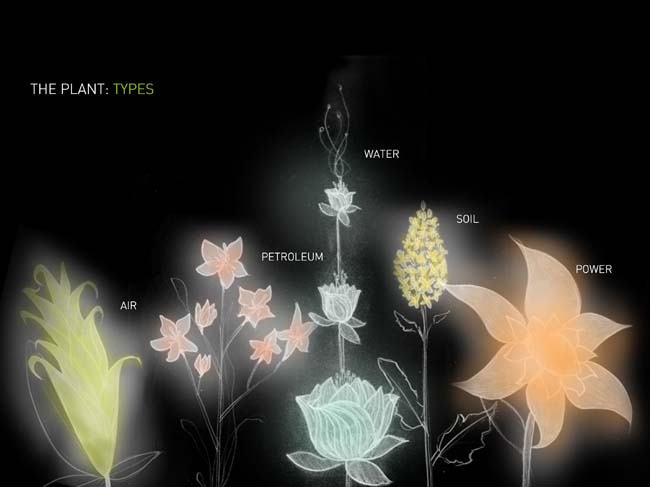Mechanical flowers that bloom or shrivel according to environmental data. Subway bars that pulse according to the heart rate of the commuter. A social campaign that connects victims of housing foreclosure via barcodes and mobile phones.
Four UCLA students under the direction of Professor Rebeca Méndez in the Design | Media Arts department presented these environmental communication projects at the Intel University Expo at the Moscone Center in San Francisco last week.
While looking to sponsor student initiatives that challenge notions of communication, Intel identified students from Méndez’s Design | Media Arts 158: Immersive Light Environments class midway through last spring term, Méndez said. The class is also co-taught with Arts Council professor Nathan Thompson.
The students were given three weeks to come up with ideas to present later this fall at the Intel Developer Forum, she said. The three UCLA projects that were selected were spearheaded by students Ashley Brown, Laurel Bybee, Christopher Tuyay and Leigh Anne Abiouness. Students from the Royal College of Art, London, Delft Technical University, Netherlands, USC, Georgia Tech and California College of Arts were also selected for the exposition.
While there are no plans at the moment to physically construct these interfaces, Méndez said the Expo importantly helps foster the relationship between corporate clients and academia.
“The main objective is to inspire corporations from within to be more open-minded,” she said.
Tuyay, a fourth-year Design | Media Arts student, created “Bloom: The World is a Garden,” a project that utilizes responsive flowers to indicate the viewer’s carbon footprint. Tuyay said he wanted to combine the mechanical and organic in order to relate ecological information usually presented in graph form.
The viewer inputs personal environment ““ related information into their mobile devices ““ addresses, whether or not they recycle, what kind of car they drive ““ and then walks towards the exhibition. The flowers then register the carbon footprint of each participant, which causes the flower to either shrivel or bloom.
“The project makes the carbon footprint physically visible,” said Méndez. “You can actually see (the flower) grow or shrivel if your footprint is bad.”
Because participants are also able to suspend the shriveling of their plant, update or improve their carbon footprint, and return to see the plant bloom, Méndez said the project allows participants to visualize caring for the Earth.
Brown, who graduated last spring from the Design | Media Arts department, collaborated with Bybee on a project entitled “Impulse: Optical Biofeedback Commuter Interface,” which registers the individual and collective heart rate of subway riders.
“The idea is that commuters would come in (to the subway) and specially equipped biofeedback bars connected to LED lights would read their heart rates, and pulse,” Brown said.
The core of the project, she said, was the desire to make the isolating experience of public transportation more communicative.
“It’s ironic that when we’re out in public, we want to communicate the least, avoid eye contact. This project forces people to interact,” Brown said.
A final UCLA project, constructed by Abiouness, originated from an interest in the housing crisis, Méndez said.
Entitled “LOAD: THIS: SITE,” the campaign would place LED screens creating two-dimensional barcodes in front of foreclosed homes. Passersby would then be able to scan the barcode with their cell phones in order to access pictures and information about the foreclosure, updated by the community.
“The site (would) shed light on what happened to the house and the community around it. It’s a shame, but these people are also the victims of the collapse of an entire system.” Méndez said.
Such a focus on the collective is important to Méndez.
“I’m very happy about the projects. They are about the community, not the individual. It’s no longer “˜all about me,'” she said.
